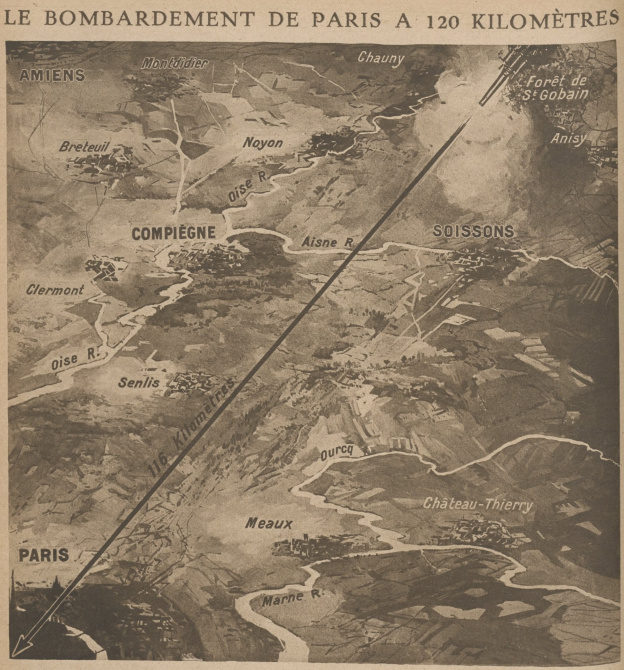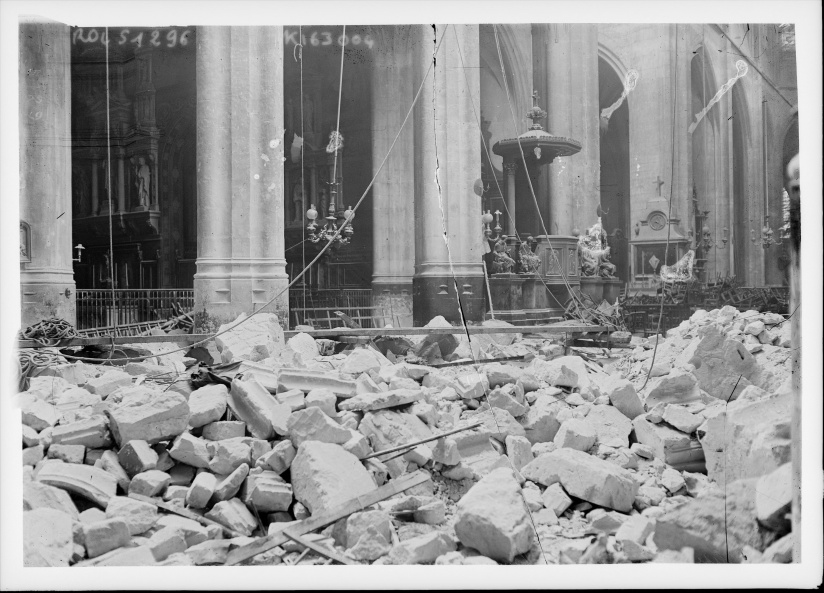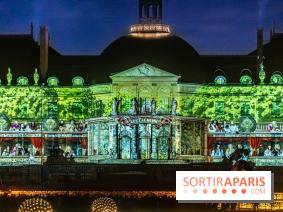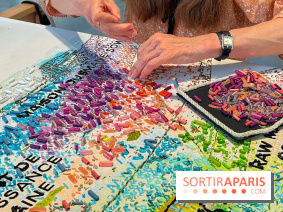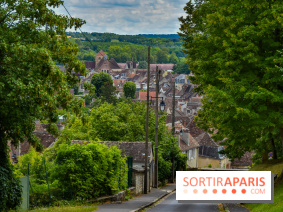On August 9, 1918, the Big Bertha fired its last shell over Paris. For 4 months, from March 23rd to August 9th, Parisians were subjected to incessant fire from this German artillery piece of unprecedented size and range.
Nicknamed "Grosse Bertha" by the French - even though this name referred to another howitzer for the Germans - these Pariser Kanonen ("Paris cannons"), designed by the German engineer Rausenberger and the industrialist Krupp, were 34 metres long, weighed 750 tonnes and had a range of 128km, i.e. 4 times the maximum range of artillery at the time.
A veritable weapon of psychological warfare designed to terrorize the Parisian population and force the French government to capitulate, Big Bertha bombarded Paris and neighboring communes (Pantin, Vanves, Châtillon-sous-Bagneux) 367 times in four months, killing 256 people and wounding 620 others.
During the first three days, 58 shells fell on Paris, at a rate of one shell every quarter of an hour on the first day of the bombardment. On March 29, 1918, the Pariser Kanone, based at Mont de Joie in Crépy, Aisne, fired a shell that landed on thechurch of Saint-Gervais-Saint-Protais in the 4th arrondissement of Paris, causing the collapse of the vault and killing 91 Parisians gathered in the church during Good Friday vespers. It was the Big Bertha bombardment that claimed the most victims.
Despite having driven half a million terrified Parisians from the capital, Big Bertha did not have the desired effect on the conflict, and theGerman general staff put an end to the operation on August 9, 1918 .
Location
Saint-Gervais-Saint-Protais church
13 Rue des Barres
75004 Paris 4

